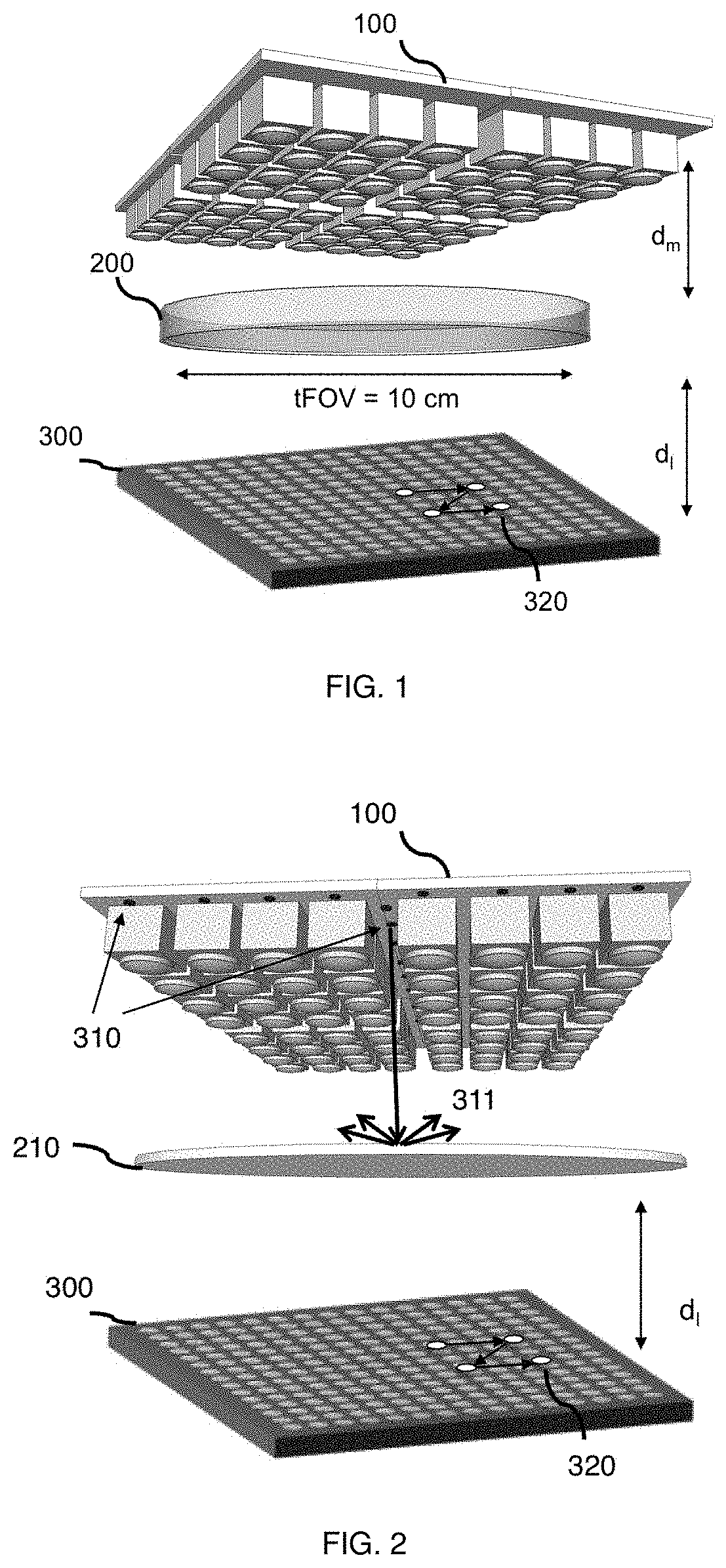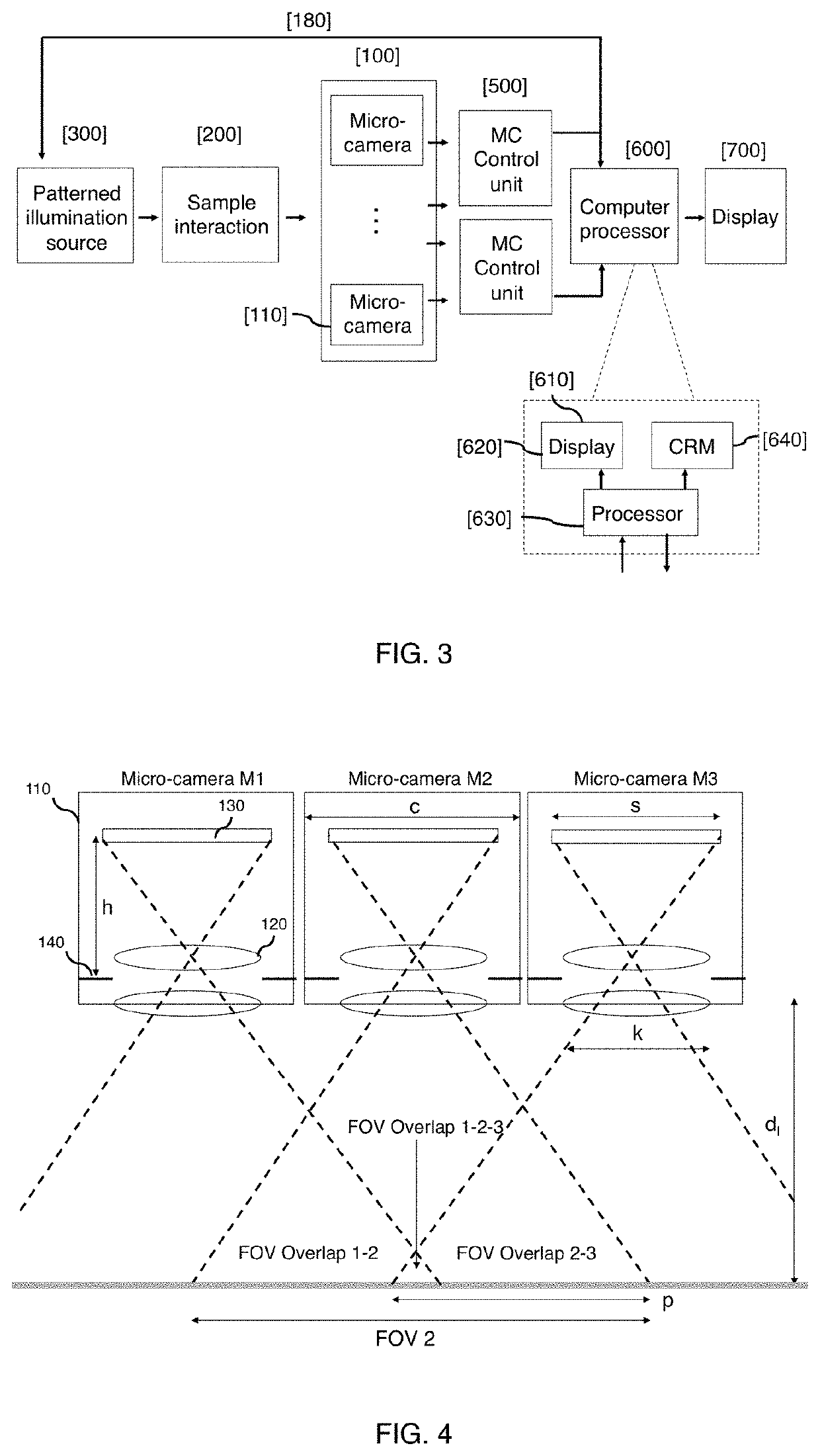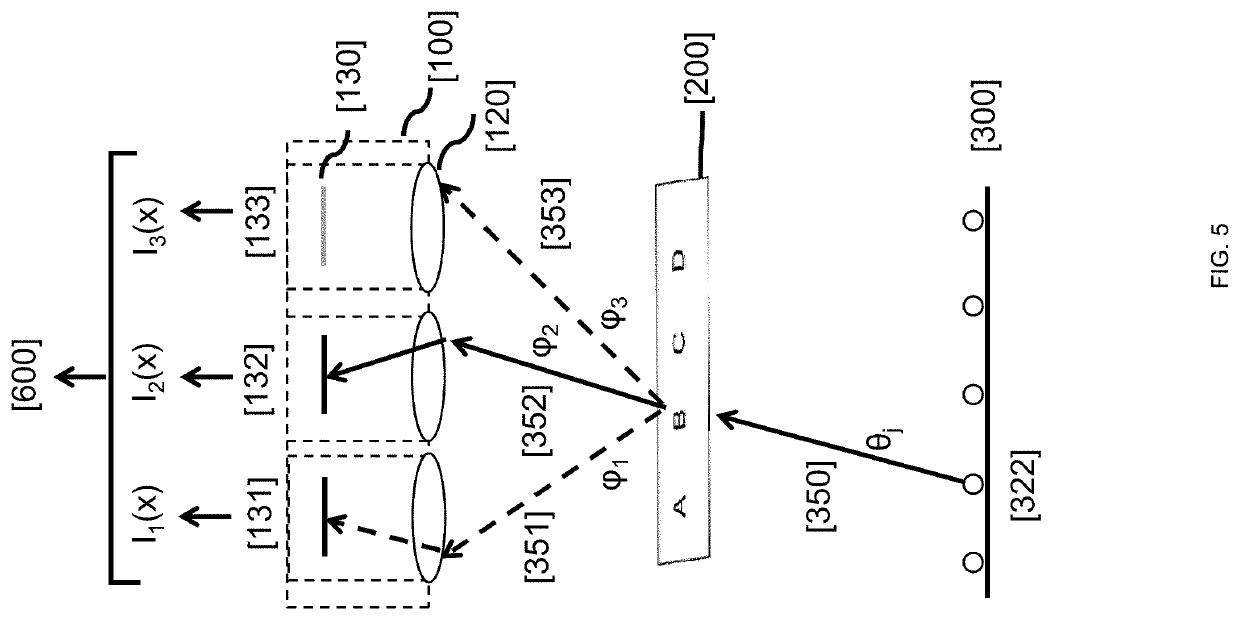Multiple camera microscope imaging with patterned illumination
a multi-camera, patterned illumination technology, applied in the field of microscope systems, can solve the problems of reducing the resolution of the main objective lens, and limiting the size of the utilized digital detector at the focal plane, so as to improve the resolution improve the final image reconstruction, and improve the effect of the final image reconstruction
- Summary
- Abstract
- Description
- Claims
- Application Information
AI Technical Summary
Benefits of technology
Problems solved by technology
Method used
Image
Examples
examples
[0037]Light from the patterned illumination source exits the sample from many spatial locations. Some of this light may then propagate to the micro-camera array. Considering one spatial location along the sample, the light exiting this location will pass through one or more micro-camera lenses to form one or more images. In the most general arrangement, each micro-camera can image a distinct sample region to its image plane and will record the intensity of this optical field on a digital detector array (e.g., a CMOS or CCD pixel array). We also note that the micro-cameras do not necessarily have to form an exact image (e.g., can be defocused or otherwise optically modified, e.g., as by a coded aperture). We denote the area of the sample from which light has interacted with, and can then enter into micro-camera number n (here denoted as Mn), as field-of-view n (here denoted as FOVn). What makes the MCPI camera array geometry distinct from other camera arrays used for microscopy is it...
PUM
 Login to View More
Login to View More Abstract
Description
Claims
Application Information
 Login to View More
Login to View More - R&D
- Intellectual Property
- Life Sciences
- Materials
- Tech Scout
- Unparalleled Data Quality
- Higher Quality Content
- 60% Fewer Hallucinations
Browse by: Latest US Patents, China's latest patents, Technical Efficacy Thesaurus, Application Domain, Technology Topic, Popular Technical Reports.
© 2025 PatSnap. All rights reserved.Legal|Privacy policy|Modern Slavery Act Transparency Statement|Sitemap|About US| Contact US: help@patsnap.com



